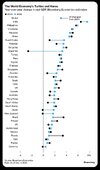- Joined
- 28 May 2020
- Posts
- 6,605
- Reactions
- 12,668
India's stock market might be running out of steam.
Has the gloss worn off?

Mick
Has the gloss worn off?
Mick

I've ridden motorbikes all my life and an Indian sourced bike was never on my list, however as this was going to be my last motorbike I didn't want to spend a stupid amount of money so bought a Royal Enfield Interceptor 650.undoubtedly
but if not India , where do you go for economic growth/development ?
while i am looking to increase my exposure to India , i am not neglecting Vietnam ( China's Mexico ) and Indonesia and am slowly relaxing my extreme biases against Africa and PNG
Pakistan looks like it may descend into another civil unrest
but India may decide to forge closer ties to Sri Lanka and Bangladesh ( i think that would be a good thing medium term )
none of these 'growth stories ' look to be easy sailing , but then you may have better entry opportunities because of those setbacks

i think the wake-up call there was a few years back when they ( some of the public ) realized an Indian assembled BMW has a substantial numbers of extra hours dedicated to quality control , one might have thought BMW would have found it cost-effective to have to Indian assembly plants at least equal ( or more modern ) to their European counterparts .The improvement in manufacturing is just amazing, anyone that thinks India can't compete with the first world or China, is dreaming.
They are working on it, but power shortage, blocked roads and railways, and the class system.i think the wake-up call there was a few years back when they ( some of the public ) realized an Indian assembled BMW has a substantial numbers of extra hours dedicated to quality control , one might have thought BMW would have found it cost-effective to have to Indian assembly plants at least equal ( or more modern ) to their European counterparts .
so not a quantum leap for a manufacturer proud of their reputation , to make/assemble quality products in India , however one might ask whether logistics in still a bottle neck ( as it seems to be in Vietnam )
India’s market regulator has unearthed a plot to allegedly generate millions of dollars in illegal gains through the legitimate trades of a large overseas investor....
The former Mumbai stockbroker – who previously was found guilty of price manipulation – would take the quantity and price information, and put it out in WhatsApp chat groups. Parekh’s alleged associates, who had saved his contact on their devices as “Jack”, “John”, “Boss” or “Well-wisher”, would scoop up the shares minutes before Capital’s buy order went to its broker. They would then sell them to the US fund at a profit....
Hello and welcome to Aussie Stock Forums!
To gain full access you must register. Registration is free and takes only a few seconds to complete.
Already a member? Log in here.